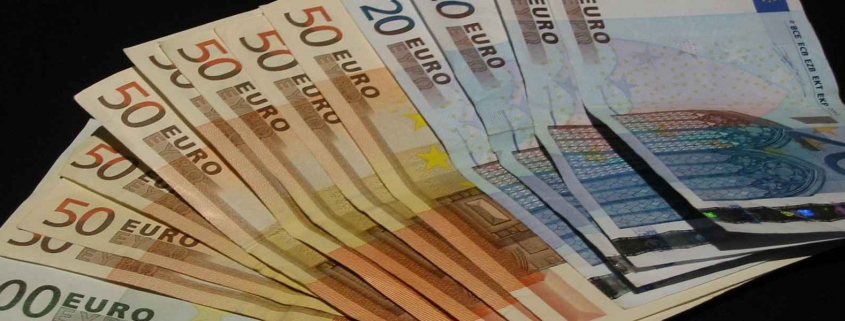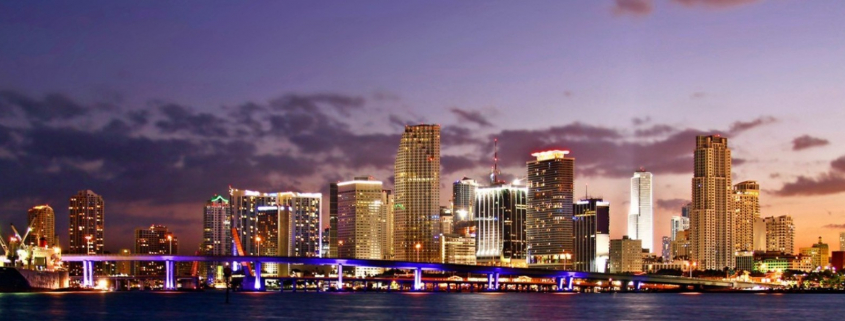Will the recent free fall of the Euro hurt sales of new and existing condominium units in Miami?
Miami right now probably feels quite expensive compared to last year for returning international visitors who are armed with euros, the official currency of 19 countries in the European Union.
The current exchange rate to convert euros into U.S. dollars stood at about $1.178 on Thursday, following a steep drop in value resulting from a surprise monetary move this week by the Swiss Central Bank, according to the foreign exchange trading website OANDA.com.
Some currency watchers say Switzerland’s sudden maneuver to protect its currency, the franc, could send Western Europe’s primary currency plummeting against the dollar in the weeks and months ahead.
The current exchange rate is the weakest the euro has been against the dollar on the date of Jan. 15 since back in 2003 when the currency was worth about $1.055. In the more than a decade since the 2003 level, the euro has had a value ranging from between $1.265 and $1.485. A year ago on Jan. 15, 2014, a euro was worth $1.367, according to OANDA.com.
The dramatic drop in the euro means that everything in Miami, from hotel rooms to bottle service at nightclubs, and rental cars to condo purchases, now cost about 14 percent more than a year ago, according to OANDA.com. A deeper weakening of the euro could diminish Miami’s reputation as a cheap, must-see global destination for vacations, shopping sprees and real estate investments with Western European visitors.
For their part, Western Europeans are a key part of the crucial pool of international buyers purchasing real estate in South Florida, according to the 2014 Profile Of International Home Buyers In Florida report released in September by the Florida Realtors.
Buyers from Western Europe purchasing in South Florida accounted for 8 percent of all international sales in the Latin American-dominated Miami area, 18 percent in Fort Lauderdale and 24 percent in the Palm Beach area.
Statewide, the report concludes that buyers from Western Europe paid a mean price of $321,500 per transaction for Florida real estate with some 85 percent of the deals transacting in cash. Price statistics for Western Europeans who purchase in the South Florida region are unknown as the Florida Realtors report does not address that topic.
What is known is that South Florida’s condo market east of Interstate 95 has a growing pool of available inventory that needs buyers, whether they originate from Western Europe, Latin America or the Northeast. An estimated 6,400 new condo units are scheduled to be completed this year east of Interstate 95 in South Florida with an additional 6,700 units slated to be delivered in 2016 and 5,000 more units in 2017, according to the preconstruction condo projects website CraneSpotters.com.(For disclosure, my firm operates the website.)
An additional 12,750 condo units are currently on the resale market east of Interstate 95 in the tri-county South Florida region. The number of condo units currently on the resale market represents nearly nine months of available inventory. Ideally, a healthy market has about six months of supply available for resale. More months of supply suggests a buyer’s market and less months a seller’s market.
The unanswered question going forward is whether South Florida’s current condo boom will be able to maintain its momentum of recent years, if buyers from Western Europe find it more expensive to buy units in the tri-county region.
Thought Of The Week: South Florida Condos “Not Priority” For Russian Investors
At a time when the U.S. currency’s run-up in value is prompting some Wall Street experts to predict the beginning of the next King Dollar era, Russian condo buyers – who have seen their home country’s currency tumble by nearly half in the last year – are reportedly rethinking their necessity to own multiple beachfront condo units in the tri-county region.
“An apartment in Miami, even the most glorious beachfront apartment, is not a priority right now,” New York Attorney Marlen Kruzhkov reportedly said in a recent press report.
This sentiment from Russian investors – a key buying pool in the tri-county region for at least the last two decades – cannot be good news for sellers of new and existing condos in South Florida who are seeking top dollar for their luxury units.
Source: The Real Deal


